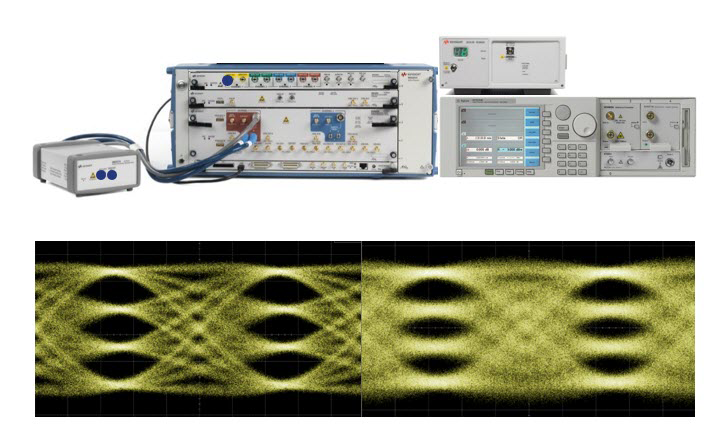What are you looking for?
N7764C 4-Channel Optical Attenuator
The N7764C is a 4-channel power-monitored optical attenuator for single-mode fiber applications
Starting from
Highlights
Applications
- Optical transceiver testing
- Optical network integration testing
Power Setting and Control Modes
In power setting mode, which is available on all N77-C variable optical attenuators, the power level at the attenuator output is set. The N7764C uses the feedback signal from a photodiode after a monitor tap to control the desired power level at the optical output.
When power control is active, the instrument also automatically corrects for power changes at the input so that the output power level you set is maintained with ±0.02 dB typical repeatability.
Attenuation setting mode
In attenuation mode, the calibrated value of attenuation in dB is set directly, without use of the power monitor. This supports use with legacy software written for attenuators without power monitors or when the power monitor reading is impaired, as due to modulation or from a signal at another wavelength or in the reverse direction.
Advanced control of power change
Especially for testing devices that are sensitive to rapid power changes, the rate of change can be set on the instrument and applies to the attenuation mode. The N7764C can be set from 0.1 to 1000 dB/s. New with the N77-C attenuators is the ability to program a ramp of attenuation steps, including dwell time at each step, which can be either stepped automatically or synchronized with an external trigger. Trigger outputs are also available. This new functionality can be used instead of sending individual program commands for each step and aid in efficient synchronization with other instruments. In power control mode, during attenuation sweeps, as well as when activating the shutter mode, 1000 dB/s change rate is applied.
Calibration offsets for external losses
Comprehensive offset functionality allows you to calibrate the optical path in various test set-ups. There is an offset for the attenuation factor, and an independent offset for the output power level, to calibrate for losses due to patch cords, connectors, and switches. Additionally, wavelength and offset value pairs can be stored in a table to compensate for wavelength-dependent effects in the optical path of the set-up. This allows you to precisely set the optical power level directly at the input interface of your device under test.
New user attenuation-mode calibration
To calibrate the attenuation setting mode for a chosen source wavelength, a new self-calibration has been implemented. The calibration process, executed at the chosen wavelength and power higher than 0 dBm, and with the setup kept stable, will run for about 2 minutes. The calibration data can be reenabled after a preset or reboot, or the configuration can be saved with enabled calibration.
Key Specifications

Interested in a N7764C?
Extend the Capabilities for Your 4-Channel Variable Optical Attenuator
Featured Resources for N7764C 4-Channel Variable Optical Attenuator
Related Products
Want help or have questions?









